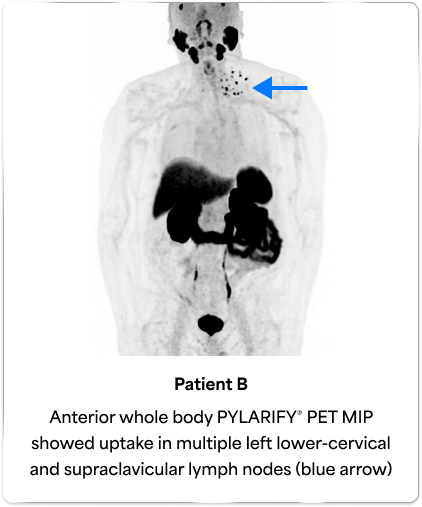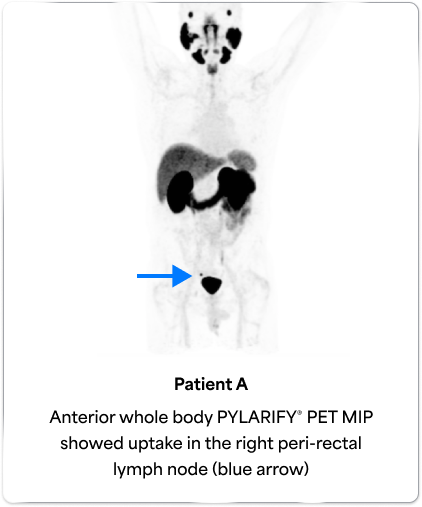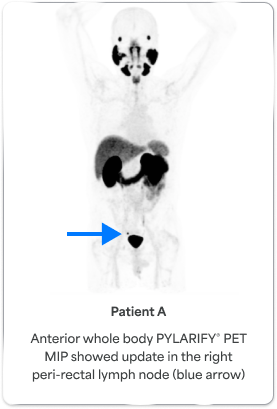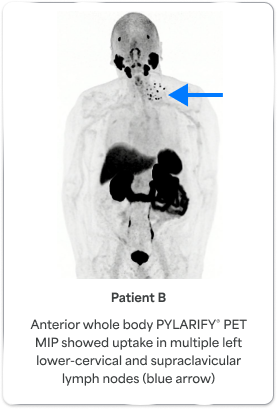Patient A
Age
73
PSA (ng/mL)
0.8
Gleason
Score
3 + 4
Stage
pT2N0M0
Patient B
Age
79
PSA (ng/mL)
0.9
Gleason
Score
3 + 4
Stage
pT2bN0M0
Post-PYLARIFY® treatment decisions
Patient A
- Treatment change from EBRT to pelvis with additional boost to prostatic fossa, to lesion-specific SBRT
- Post-treatment PSA levels dropped to 0.06 ng/mL
Patient B
- Treatment with IMRT to lymph nodes + ADT
- Post-radiation PSA levels dropped to 0.04 ng/mL


